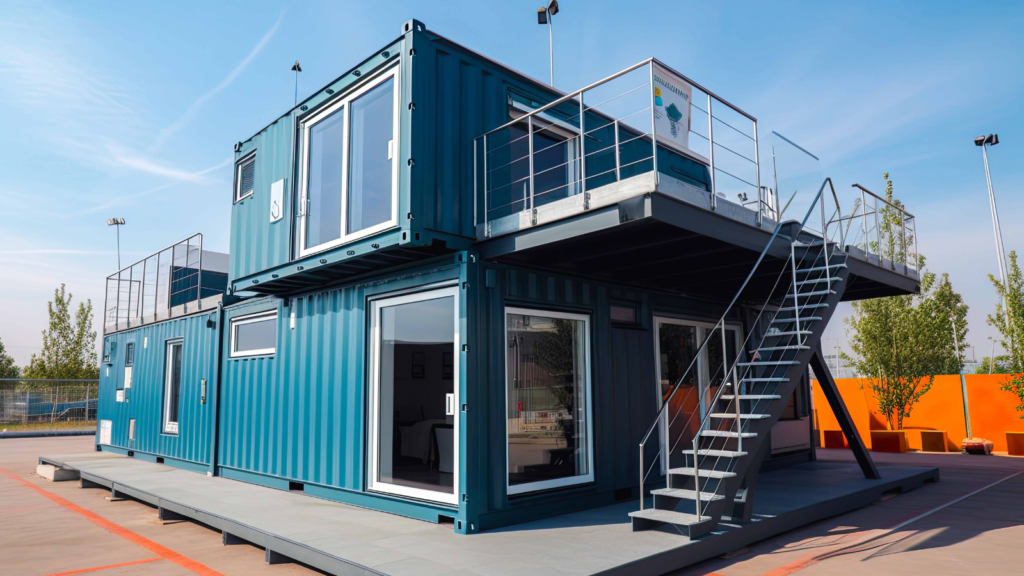How to build a home from shipping containers

Photo courtesy of Custom Container Living
Opinions expressed by Digital Journal contributors are their own.
The housing world has never been constant. Every other time, something new comes up and takes over the space. One that has marked its spot and stuck to it is shipping container homes. Take a look at the data.
Shipping container homes at a glance
The shipping container home market size is slated to scrape the USD$109.4 billion mark by 2032 from roughly USD$61.7 billion in 2022. If you do the math, that’s about a 5.91% compound annual growth rate (CAGR) per year for the period.
That’s quite an interesting trajectory, given that the overall traditional housing industry is poised to post around 2.2% CAGR between 2024-2029. Now, if you’re wondering how to build a home from shipping containers, you’ve come to the right guide. Here’s a step-by-step process you can try.
Planning and design
Start by asking yourself: How big do you want your shipping container home to be? How many containers will you need? Is it just a tiny home for one, or do you need multiple rooms for a family? Next, you’ll need to think about planning permission and regulations. Some places are container-home-friendly, while others might have restrictions.
You’ll then focus on creating a more detailed blueprint. Involve planning experts who know the ins and outs of shipping container home building, and you might just find your ultimate dream home among the floor plans available for custom container homes. Getting this right sets the tone for the entire custom container home build project, so don’t take it lightly.
Acquiring shipping containers
You’ll typically choose between 20-foot and 40-foot containers. And then, you’ll decide if you want new (one-trip) or used (cargo-worn) containers.
New containers are in near-perfect condition, but they’re pricier. Used containers are cheaper and eco-friendly, but often show wear and tear. Check for rust, dents, and structural damage.
Pro tip: Try to avoid containers used to ship hazardous materials. It may not be best for living spaces.
Site preparation and foundation
First, clear and level the ground. Remove any rocks, roots, or debris. If you’re working on a sloped site, you might need to level it out or build a retaining wall.
Once that’s done and dusted, move on to the foundation. Some of the options to consider include concrete piers, concrete slabs, and strip foundations.
Pro tip: For a single container home, concrete piers usually work. But if you’re stacking multiple shipping containers, a slab or reinforced strip foundation will be more stable.
Modifying containers

Cutting openings for windows, doors, and interconnections is step one. You’ll need a plasma cutter or an angle grinder for this job.
You should then consider adding steel framing around your cutouts to keep the container’s strength intact. If you’re stacking containers, weld steel plates at the corners to distribute the weight evenly.
Once this is over and done with, insulate the shipping container house. You can go for spray foam (the most popular choice) or do pre-cut insulation panels. They’re more affordable than spray foam insulation, but might leave gaps in the walls and ceiling.
Once insulated, treat the exterior with an anti-corrosive paint or coating. This helps protect your container from rust and the elements.
Assembling the structure
Double-check your foundation markings to align each container perfectly. Use a level to ensure they’re sitting evenly on the foundation. If you’re using multiple containers, this is also when you’ll stack and arrange them according to your design.
Once the containers are in place, weld or bolt them at the corners and along the edges to lock them into position. Next, use a weatherproof sealant to fill in any spaces where air, water, or pests might sneak through.
For a more permanent solution, consider using steel strips welded over the joints. A solid seal will prevent moisture from building up inside the home.
Interior finishing
Start by installing your utilities. Plumbing and electrical systems go in first, so you can hide the pipes and wiring behind walls. Once that’s done, move to the interior walls.
Use light steel or wooden studs to create the room divisions you planned in your layout. Next, add drywall or wood paneling for a clean finish. As for flooring, you can go with wood, tile, or vinyl. Your choice. Just install a vapor barrier underneath to prevent moisture issues.
Once you’ve handled all this, install your windows and doors, then get on to personalizing your home to your heart’s content.
Closing thoughts
Building your home from shipping containers is indeed a possibility. However, there’s a lot of work and sweat that’ll take place behind the scenes. To increase the odds of getting the whole project right, consider involving a shipping container home builder from start to finish.
Don’t hesitate. Use the tips you’ve gleaned from this guide, hire trustworthy pros, and start working on your dream home.
How to build a home from shipping containers
#build #home #shipping #containers





